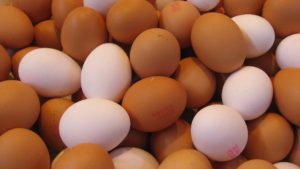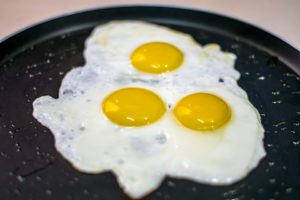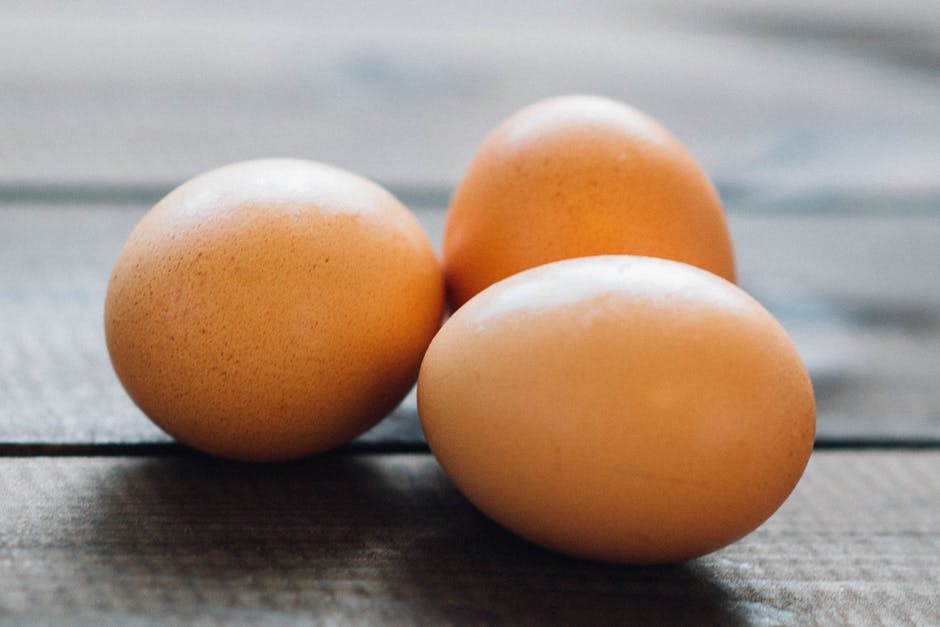Eggs are laid by female animals of many different species, including birds, reptiles, amphibians, mammals and fish, and have been eaten by humans for thousands of years. Bird and reptile eggs consist of a protective eggshell, egg white, and egg yolk, contain within various thin membranes. Take a look below for 28 more fun and interesting facts about eggs.
1. The most commonly consumed eggs are chicken eggs.
2. Other poultry eggs include those of duck and quail are also eaten.
3. Egg yolks and whole eggs store significant amounts of protein and choline, and are widely used in cooking.
4. Despite the nutritional value of eggs, there are some potential health issues arising from cholesterol content, salmonella contamination and allergy to egg proteins.

5. Chickens and other egg-laying creatures are widely kept throughout the world, and mass production of chicken eggs is a global industry.
6. In 2009, an estimated 62.1 million metric tons of eggs were produced worldwide from a total laying flock of approximately 6.4 billion hens.
7. Refrigerating eggs isn’t necessary and many countries outside the United States keep their eggs at room temperature. U.S. regulations require that eggs be power-washed, which removes all organic matter and any harmful bacteria but also strips the egg’s shell of its protective coating, thus rendering it more porous and open to contamination.
8. You can peel hard boiled eggs by blowing the egg right out of the shell.
9. Due to their similar protein composition, blood can be used as an egg substitute in baking and making ice cream.
10. The Ostrich-Egg Globe may be the oldest globe, dated 1504, to depict the New World, engraved with immaculate detail on two conjoined halves of ostrich eggs.
11. You absorb roughly half the protein from an egg if you eat it raw than when you cook it.

12. Fake chicken eggs are becoming a problem in China. They are made to look like the real thing from a mixture of resin, coagulant and starch complete with pigment for color as well as a counterfeit shell. One person can make about 1,500 of them per day.
13. Brown eggs are more expensive than white eggs, but it’s not because they’re healthier. Brown eggs cost more because the hens that lay them are physically bigger breeds than the white egg laying chickens.
14. All eggs are hormone free because the FDA banned the use of hormones in all poultry production in the 1950s.
15. According to a PLoS ONE study, over 500 years ago, a virus infected a species of native South American chickens. This infestation resulted in a genetic mutation that triggered an accumulation of a pigment known as biliverdin, which ultimately caused the chickens to produce blue and green eggs.
16. The thickness of an egg solely depends on the age of the chicken: while young chickens lay eggs with harder shells, old chickens lay eggs with thinner shells.

17. Blue, green, and brown eggs all look more unique and interesting than white eggs, but just because white eggs are lacking in color doesn’t mean they’re lacking in nutrition. The differences in egg shell color is solely due to genetics.
18. Egg yolks will range in color, from pale yellow to deep orange to even a bright red, based on a hen’s diet. Because free-range hens often eat more pigmented, nutritious foods that range from insects to grasses, eggs from these chickens often have richer colored yolks that are much better for you.
19. Chicken earlobes can predict what color egg they will lay.
20. Despite color differences at maturity, all eggs start out white in their development.
21. You can test an egg’s freshness by placing it in a cup of water. If the egg floats, it indicates that the egg is old and has a large air pocket, in which case you should pass on eating it.
22. In 1912, three men set out to recover emperor penguin eggs from Antarctica. It was so cold that one man’s teeth chattered so violently that they shattered. When he returned to the United Kingdom, the National History Museum refused to accept the eggs.

23. Only 1 of every 20,000 eggs might contain salmonella. At this rate, if you’re an average consumer, you might encounter a contaminated egg once every 84 years.
24. The American Egg Board disapproves of the iconic “This is Your Brain on Drugs” ad campaign because it could make kids think eggs are unhealthy.
25. In 1474, a chicken passing for a rooster in Basel, Switzerland was sentenced to burn at the stake for committing the, “heinous and unnatural crime of laying an egg.”
26. A hen turns her egg nearly 50 times each day to keep the yolk from sticking to the side.
27. The Araucanian Chicken is also called the Easter Egg Chicken because it lays natural blue, green, pink and brown eggs.
28. Kiwis lay the largest egg in relation to their body size of any species of bird in the world.





One Comment
Pingback:
February 28, 2018 at 3:37 pm